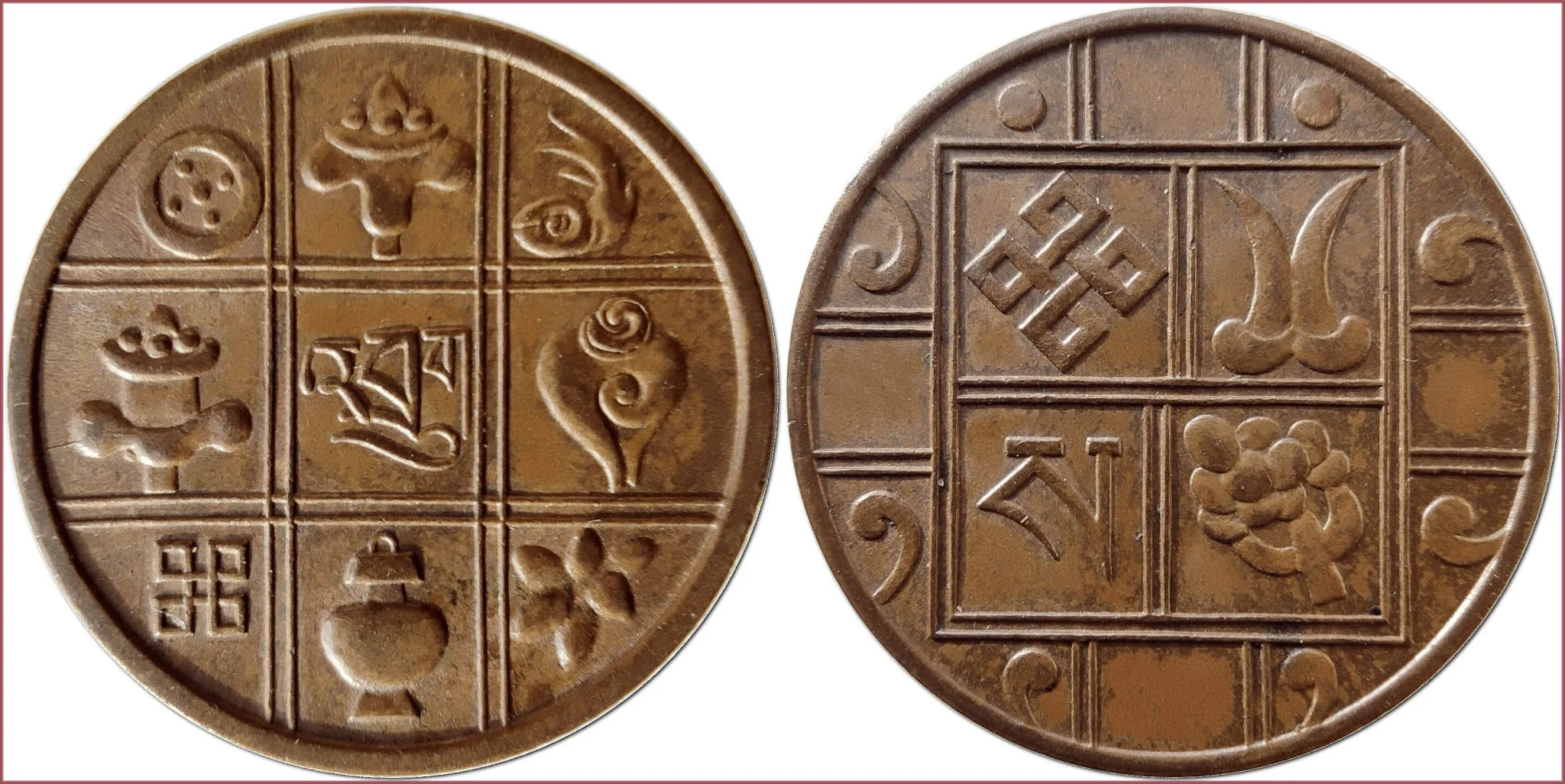PICE: COIN OF BHUTAN
1 pice, ND (1954): Kingdom of Bhutan
This coin does not contain a date, but it is known that two issues were made: in 1951 and 1954. The first issue is marked by less detailed execution of small design elements (e.g., fish eye).
Ruler: Jigme Dorji Wangchuck — King of Bhutan during 1952-1972.
ND (no date).
འབྲུག: Bhutan.
The Eight Auspicious Symbols of Buddhism and the name of the state in the center: Dharma Wheel, Jewelled Parasol, Golden Fish, Victory Banner, Conch Shell, Endless Knot, Treasure Vase, Lotus Flower.
3 buddhist symbols in a square + the Letter SA (the 28th letter in the Tibetan alphabet; it’s energy is feminine, also a word meaning "the earth, soil, land").
Mintage: 1.260.000.
- Bronze: 21.3 mm - 2.9 g
- Reference price: 3.5$
COIN PICE — WHERE & WHEN (coins catalog: by names & emitents)
- KINGDOM OF BHUTAN (1928-1974): pice = 1/100 rupee
- ISLAMIC REPUBLIC OF PAKISTAN (1948-…): pice = 1/4 anna = 1/64 rupee; pice = 1/100 rupee (after 1961)
- REPUBLIC OF INDIA (1950-1955): pice = 1/64 rupee
- BRITISH INDIA /including BOMBAY + BENGAL/ (18th-20th centuries): pice = 1/64 rupee
- EAST INDIA COMPANY (1853): pice = 1/64 rupee
- INDIA, PRINCELY STATES / BAHAWALPUR + BIKANIR + DHAR + GWALIOR + TONK/ (19th-20th centuries): pice = 1/64 rupee
- EAST AFRICA PROTECTORATE /BRITISH EAST AFRICA/ (1897-1899): pice = 1/64 rupee
- IMPERIAL BRITISH EAST AFRICA COMPANY /MOMBASA/ (1888-1889): pice = 1/64 rupee
English coin name pice comes from Hindi पैसा (means "Money, wealth, riches"). There are related names of coins: paisa, pysa, pesa...

